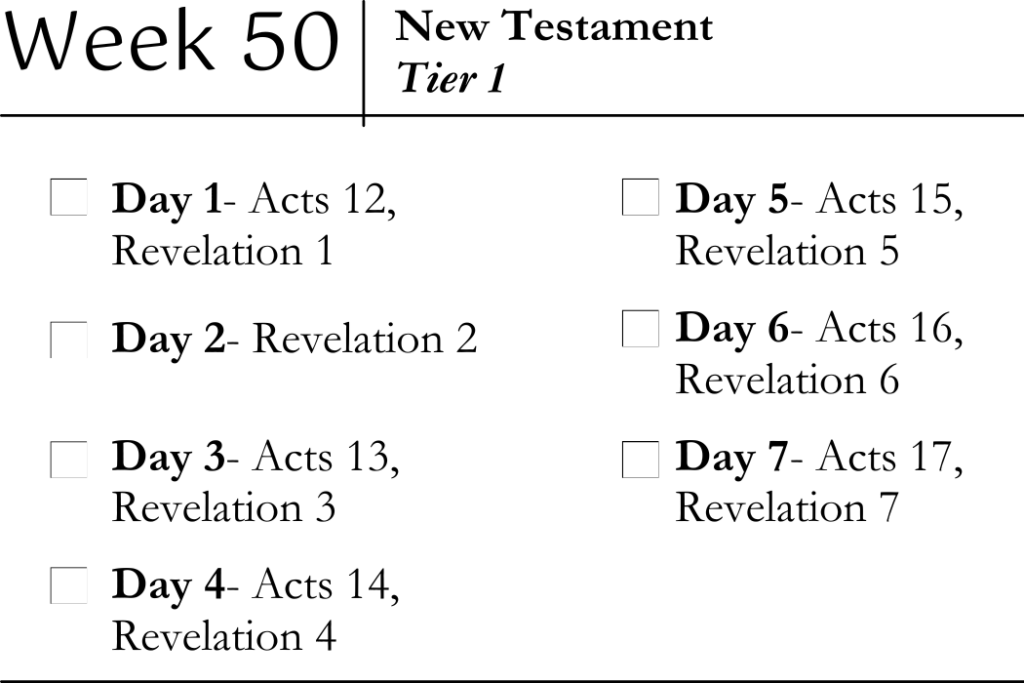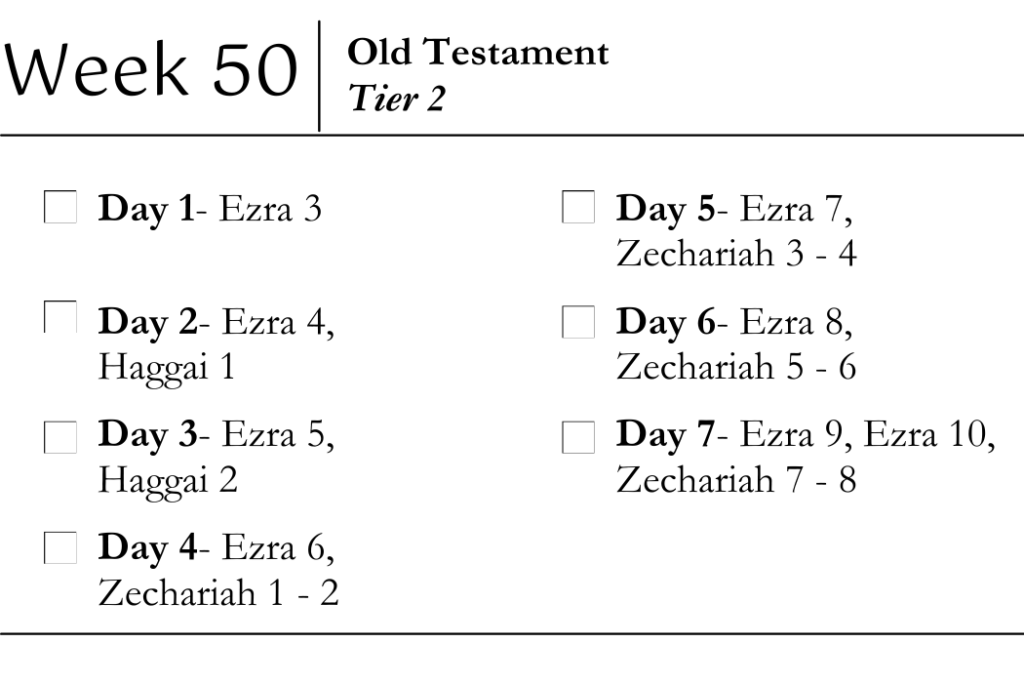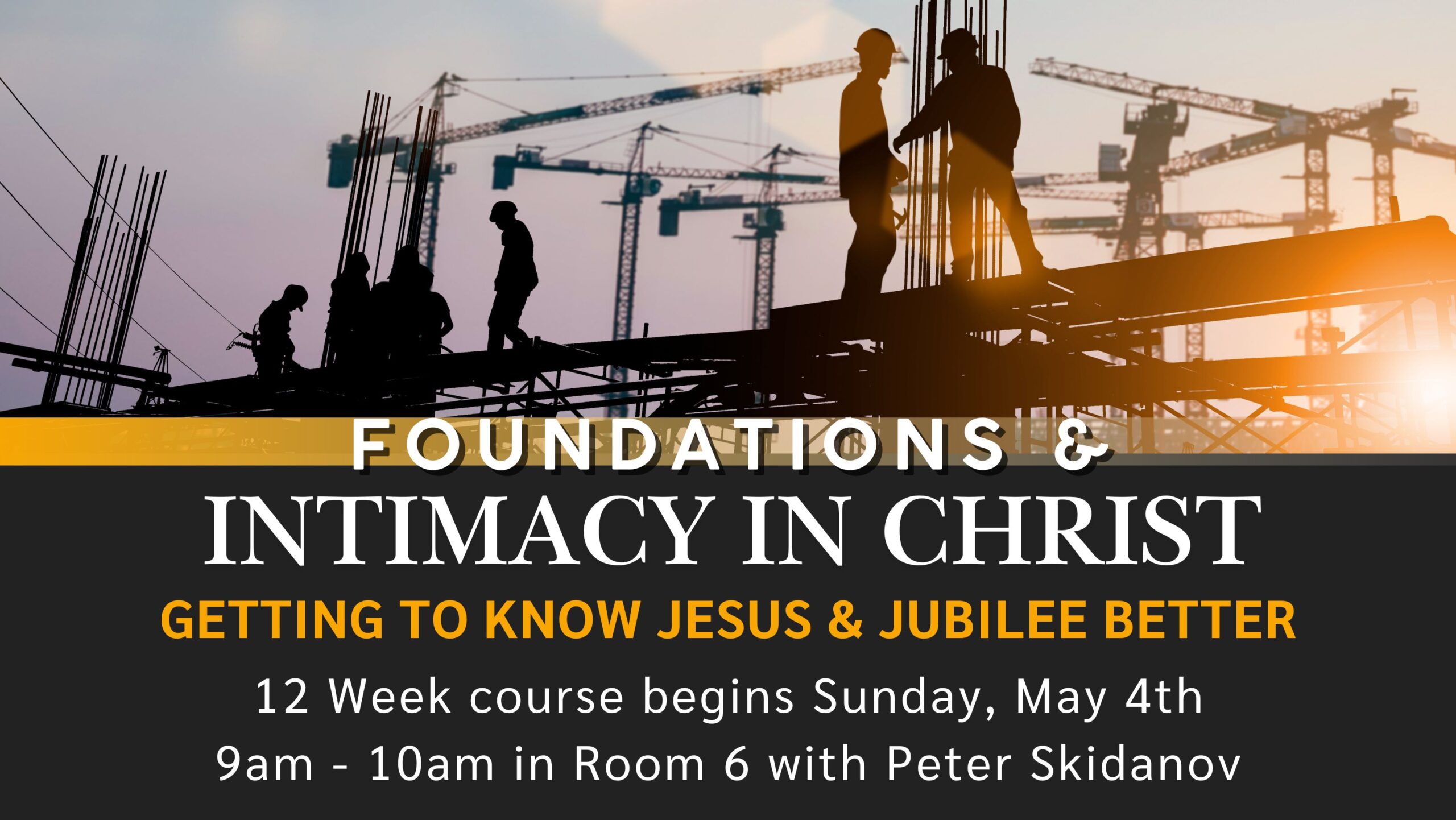Return to Me and I will return to you.
The church is about to explode into a new paradigm in missionary work, but first, this paradigm must be discovered through prayer. Paul and Barnabas are sent to Jerusalem to bring alms and are impacted by answered prayer in Peter’s release from prison. The Revelation of Jesus Christ begins with the vision of the glorified Christ. Ezra records the works of Joshua the high priest and Zerubbabel the governor, along with the remanent as their building of the temple is shut down through jealousy and fear. For 14 years, it will stand idle until the prophets Haggai and Zechariah come and charge them to begin again.
WATCH That I May Know Him Week 50 PODCAST

ACTS
Acts 12 – 17
Paul and Barnabas witness prayer for Peter and the power of its deliverance and judgment at Jerusalem in Chapter 12. They come back to Antioch and practice waiting on the Lord in prayer and are led into a new missionary work of the Holy Spirit. From there they are sent out by the Holy Spirit and witness great miracles and conversions, going first to the Jews in city synagogues and then to the Gentiles. Chapter 13 records Paul sharing at Antioch in Pisidia (13 – 52). Upon returning to Antioch, their home church, they are confronted with believing Jews who insist that Gentile believers become circumcised according to the custom of Moses otherwise they cannot be saved.
Paul and Barnabas are sent to Jerusalem to settle the matter. The Holy Spirit makes it clear that faith in Jesus is what is required to believe. There is a letter written and read at Antioch and throughout the churches, bringing much joy and encouragement. In Chapters 16 and 17, Paul begins his next missionary journey without Barnabas, because Barnabas wants to take Mark with them again, and Paul is unwilling because he had deserted them on the first trip. God uses everything. Barnabas, who found Paul, now finds Mark, and this Mark will again one day be “helpful to Paul” and with him in many places: 2 Timothy 4:11, Philemon 1:24, Colossians 4:10.
Incidentally, this is the same Mark who will write the Gospel of Mark.
REVELATION
Revelation 1 – 7
Several years ago, I paused to meditate on the image of Jesus and found myself in Revelation Chapter 1. I continue, to this day, seeing Jesus in His glorified exalted state through these verses of this chapter. Chapters 2 and 3 are letters to the seven churches and each message is for all the churches to hear what the Spirit says to the churches.
Chapters 4 and 5 are of John’s being called up to the throne room and seeing the One seated on the throne and His glory. We see the 24 elders, the four living creatures, and the Lion of the Tribe of Judah who has overcome as a Lamb, standing amid this company, as though it has been slain. The Lamb steps forward and takes the scroll out of God’s right hand. Could the “words of this prophecy” (Revelation) be contained in the scroll?
Once the Lamb of God has the scroll, the worship that ensues is expansive like circles in a lake that expand outward after a large stone is thrown in. I love to meditate on the worship recorded in Revelation Chapters 4, 5, 7, 11, 15, and 19. They too are expansive circles of the revelation of God and His outworkings of salvation. Yep, Revelation for me is a book of Worship!

HISTORY
Ezra 3 – 10
Ezra now begins with the restoration of worship in Jerusalem after first building the altar of God. They kept the Feast of Tabernacles and then began building the Temple, up to laying its foundation. The people praised and gave thanks to the Lord “For He is good, For His mercy endures forever toward Israel” (Ezra 3:11). Many wept who had seen the first temple, others rejoiced with shouting, causing a sound that was heard far off.
There is interest from the Samaritans to help build, which is rebuffed by Zerubbabel the governor, Joshua the high priest, and the rest of the elders. This begins a battle of harassment and lawsuits to finally force the work of the Temple to be stopped by force. Chapter 5 begins the second attempt at building, through the prophesying of Haggai and Zechariah. Six years later the temple is finished and dedicated and Passover is observed.
“So, the elders of the Jews built, and they prospered through the prophesying of Haggai the prophet and Zechariah the son of Iddo. And they built and finished it, according to the commandment of the God of Israel, and according to the commandment of Cyrus and Darius, and Artaxerxes the king of Persia.” (Ezra 6:14)
Chapters 7 and 8 record Ezra’s journey, with a remnant from exile at the decree of Artaxerxes, with a large gift for the temple. Their success was found here: Ezra 7:10; 8:21-23, 31.
Chapters 9 through 10 are Ezra’s calling and cleansing of the people from intermarriages, which was bringing assimilation into the nations that surrounded Jerusalem.
PROPHETS
Haggai 1 – 2
Here we have recorded the work of the most successful prophet in terms of waking a people out of neglect of God’s house and poverty into obedience and prosperity! Two short chapters spanning three months of four prophetic encounters leading to the laying of the foundation of the temple.
Zechariah 1 – 8
Zechariah received the word of the Lord for Jerusalem and the temple that had started being rebuilt two months after Haggai began his prophesying. Zechariah records eight visions that encourage the builders to build and how they are to build in trust and grace. Chapter 3 is a vision for Joshua the high priest, and Chapter 4 is one for Zerubbabel the governor. Timeless chapters we all have read. More visions follow through Chapter 6, with a prophetic act of the coming Messiah King Priest whose name is the BRANCH! (Zechariah 6:9-15)
Chapters 7 and 8 take place four years into the building of the Temple with two years left before it will be completed. Great faith, promise, remembrance, and new purpose are recorded to empower Judah




